Orkney Islands: Journey Beyond the Mainland to Scotland’s Hidden Gem
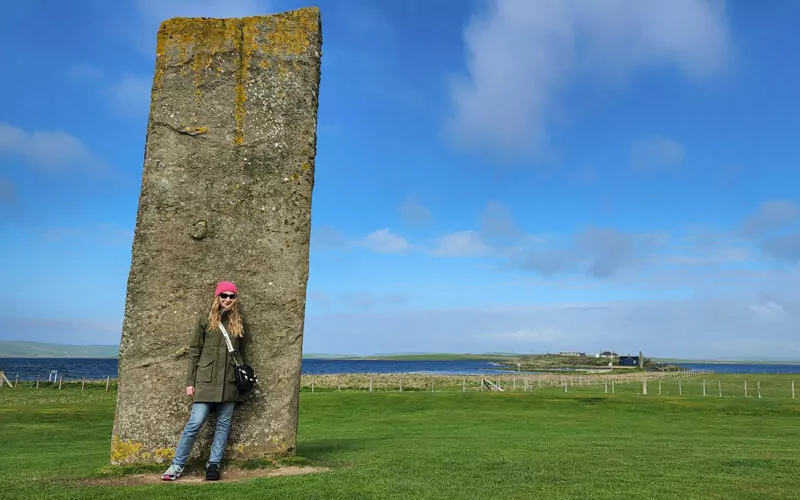
The Orkney Islands, or simply Orkney, are a breathtaking archipelago nestled in the northern islands of Scotland. Imagine standing on the edge of the mainland, with the sea breeze in your hair, looking out over a scattering of 70 islands, each one holding its own unique secrets. Only 20 of these islands are inhabited, with the largest known simply as the ‘Mainland.’
The heart of Orkney beats in Kirkwall, the largest settlement and administrative hub of the islands. Visiting the town feels like a step back in time – yet with all the modern conveniences of today. Albert Street, the main shopping street in Kirkwall, is lined with quaint local shops and cozy restaurants. And then you have majestic structures such as Saint Magnus Cathedral. It’s a stunning testament to Romanesque architecture, and somehow, the inside is even more beautiful than the exterior.
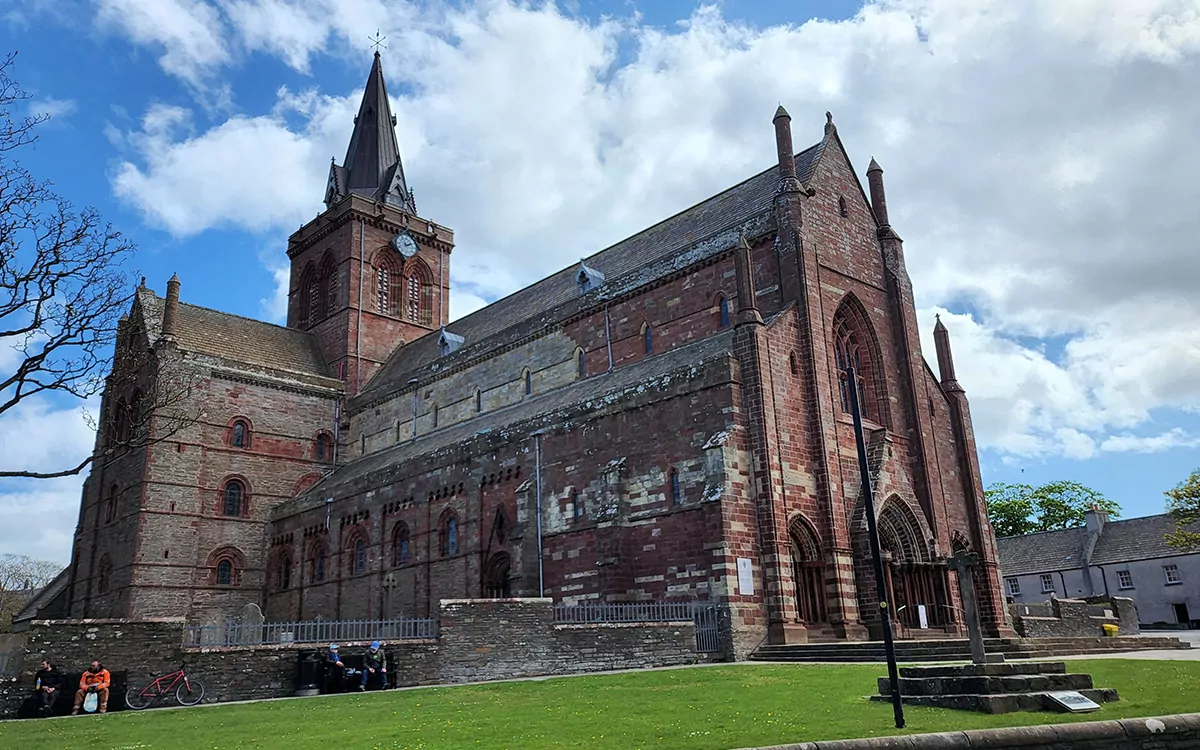
Orkney Today
When my husband and I arrived in Edinburgh for the start of our Scotland adventure, we chatted with our taxi driver about our trip itnerary. He mentioned that most locals never visit Orkney. In fact, he’d estimate that only 10% of locals make the trip. That number was shocking to me, knowing all the island had to offer.
The island is home to a cluster of well-preserved Neolithic monuments that are designated as UNESCO World Heritage sites, which was the main draw for my visit. If you’ve read my other travel pieces here, you know I love old runes. These ancient treasures, including the mystical Ring of Brodgar, the impressive Standing Stones of Stenness, and the remarkably preserved Neolithic village of Skara Brae, draw history geeks and curious travelers from all corners of the globe, including yours truly who absolutely fell in love with the island.
Each monument tells a story of a civilization that existed around 5,000 years ago, offering a fascinating window into the past. Coupled with the stunning natural beauty of the islands — from rugged cliffs to serene beaches — Orkney provides a unique blend of history and natural splendor that is nothing short of enchanting. And the people… the island residents are some of the nicest humans I’ve ever met. I frequently joke with my husband that if I could move anywhere in the world, it would be to a farm on Orkney.
Planning on traveling to the Orkney Islands? Here’s what you need to know before you go.
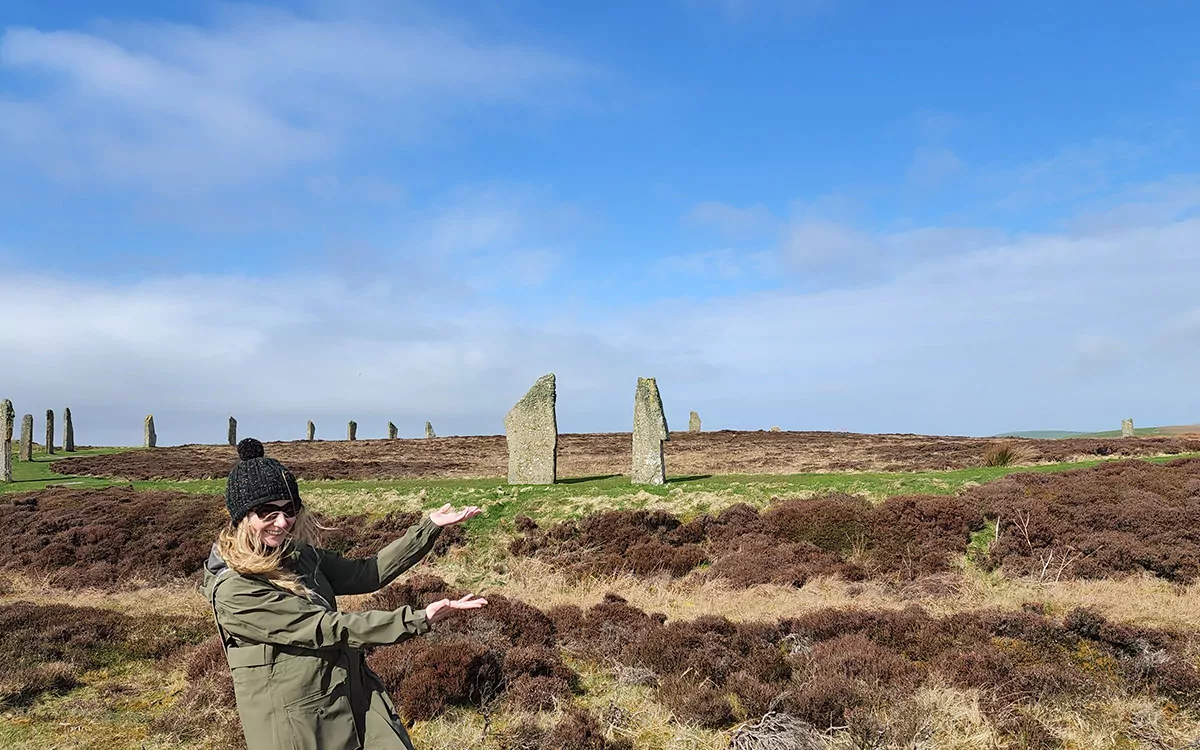
The History and Cultural Significance of Orkney Islands
Having been inhabited for over 8,000 years, the Orkney Islands have a rich history. Much like prehistoric Scotland, hunter-gatherers followed the glaciation of the Ice Age. The spread of Neolithic culture in the region soon resulted in early farming settlements and Megalithic culture.
By the Iron Age, there were “brochs” and “weems,” referring to round towers and underground houses respectively. Not much is known about the earliest inhabitants of the Orkney Islands. The same could be said for the culture and language of the earliest inhabitants. There were only two languages found to be spoken in pre-Norse Orkney which were Old Gaelic and Latin.
Orkney was colonized twice during its history. In 875 AD, the archipelago was colonized and annexed by the Kingdom of Norway. At that time, the Norsemen settled into the islands. By 1472, the Scottish parliament absorbed the Earldom of Orkney into the Kingdom of Scotland.
Where Did Orkney Get Its Name?
Orkney’s intriguing name carries a rich tapestry of history within it. Tracing back to the first century AD, Roman geographers Ptolemy and Pomponius Mela called this enchanting landmass “Orcades.” Byzantine poet John Tzetzes referred to the islands as Orcades in his world Chiliades.
However, etymologists have usually interpreted “orc” as a Pictish tribal name that means “young pig” or “young boar.” According to Old Irish speakers, the islands were called “Insi Orc” or “Islands of the young pigs.” Other early sources estimated that Orkney came from the Latin orca or whale.
Norwegian settlers who arrived in the late ninth century interpreted “orc” as the OId Norse “Orkn” or “seal,” and added “eyjar” or “islands to the end. The name then became “Orkneyjar” or “seal islands.”
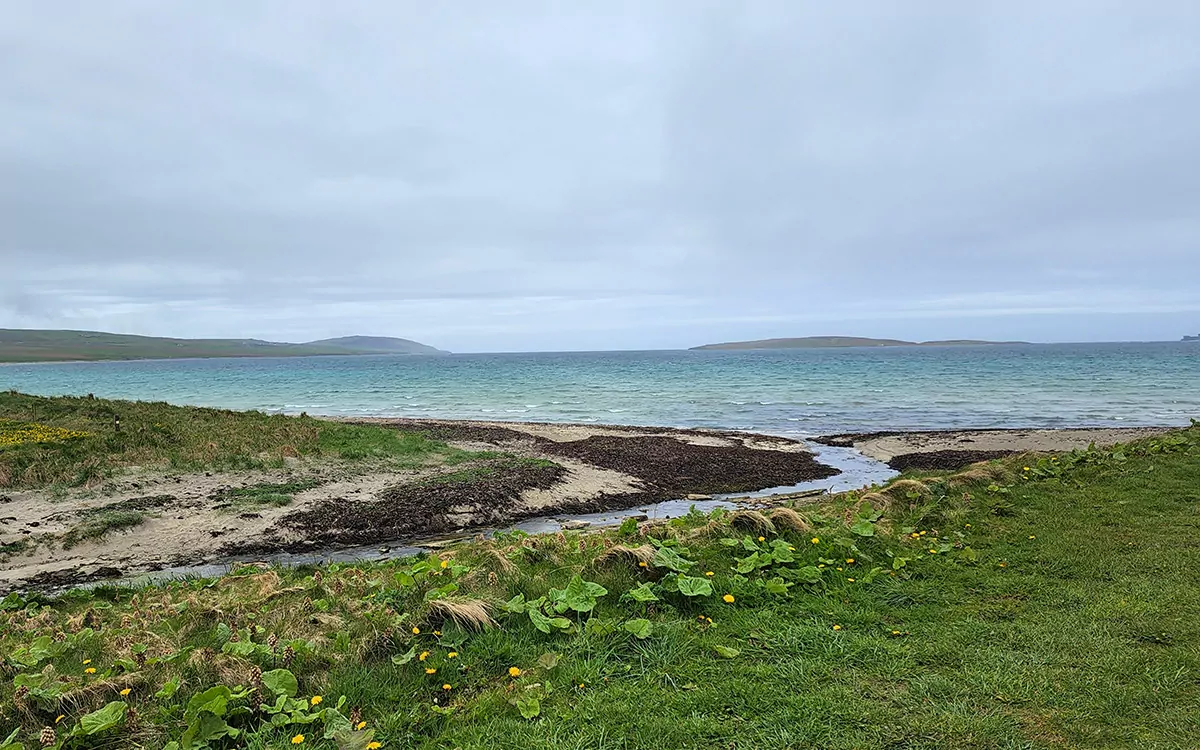
The Natural Beauty and Wildlife of Orkney Islands
The Orkney Islands are a paradise for nature lovers as they’re teeming with an abundance of local wildlife and vibrant flora. Thousands of birds perch themselves on the islands’ sea cliffs, including puffins, guillemots, gulls, gannets, and kittiwakes. Additionally, the marshlands and moorlands in Orkney also serve as habitats for more birds of prey.
Hoy, one of the islands, is particularly noteworthy as a vantage point for spotting the majestic white-tailed or golden eagle. Orkney’s strategic location makes it a vital rest stop in the migratory routes of these beautiful birds.
Orkney’s surrounding seas are also teeming with life. Tourists can spot seals, whales, and the elusive orcas, as well as dolphins. Other forms of marine life, like sea urchins, starfish, and hermit crabs, among others, also inhabit the surrounding waters.
The Orkney Islands also boasts meadows, fields, and verges that continuously thrive all year round. Wildflowers and crops emerge during the spring and into the summer. Around 500 native plant species thrive here, including the delicate Primula Scotica, a tiny wonder unique to Orkney.
Adding to the allure of the island are Orkney’s pristine beaches, geos, and bays. These offer the perfect backdrop for viewing the enchanting Northern Lights, painting the sky with their ethereal glow in the autumn and winter months.
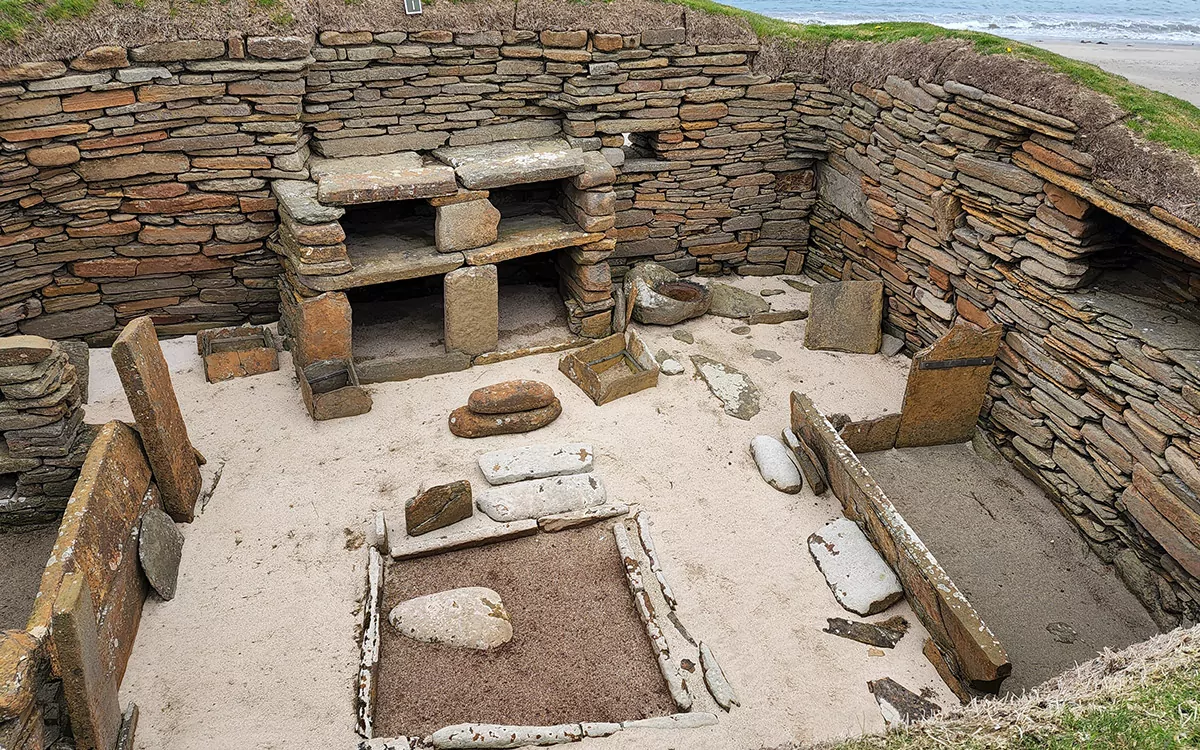
Archaeological Wonders of Orkney Islands
The Neolithic monuments found in the Orkney Islands are collectively known as the “Heart of Neolithic Orkney.” These monuments are made up of the Maeshowe, the Stones of Stenness, the Ring of Brodgar, and Skara Brae. These are all considered UNESCO World Heritage Sites.
The monuments are in two places on the islands, around 6.6 kilometers apart on the Mainland. Over time, the monuments remained intact and provided archaeologists with a clear picture of what life was like at the time. The four monuments are also considered among Western Europe’s most important Neolithic sites.
Additionally worth noting, between the Standing Stones of Stenness and the Ring of Brodgar, not far from Maeshowe, lies the Ness of Brodgar. This archaeological site found proof of housing, decorated stone slabs, a stone wall with foundations, and a large building considered a Neolithic “cathedral.”
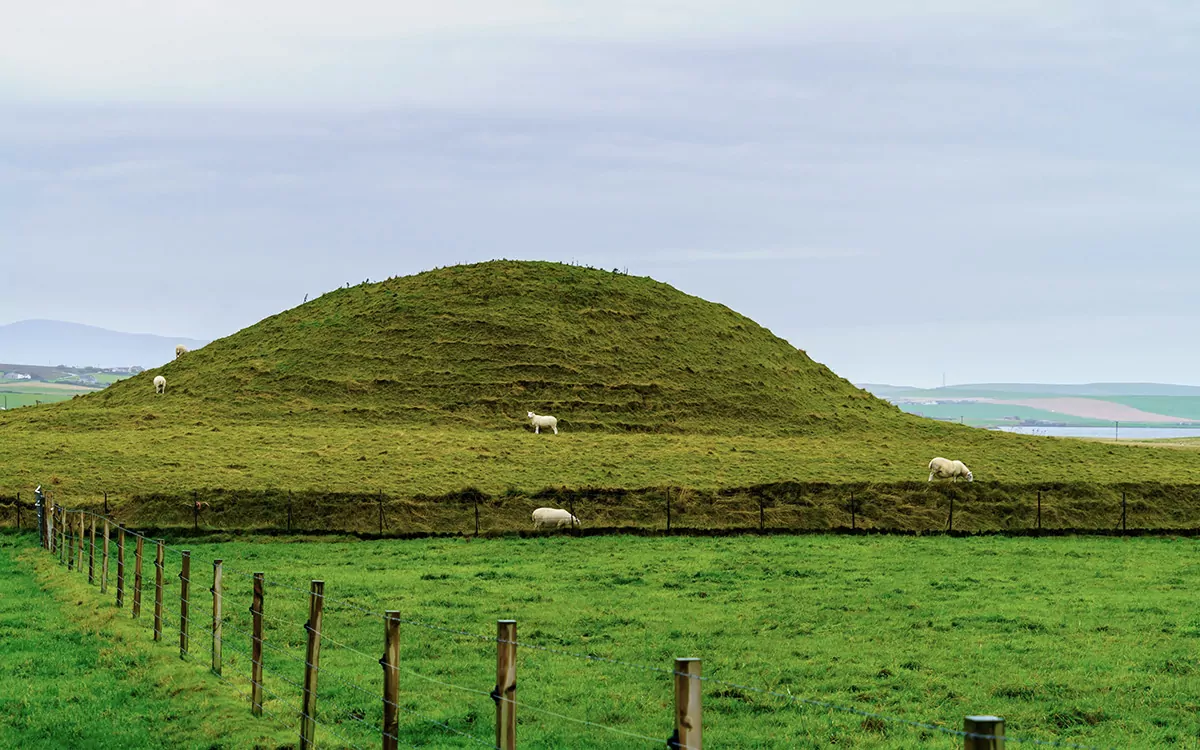
Maeshowe
A remarkable prehistoric marvel nestled in the heart of Orkney, Maeshowe is not just a chambered cairn and passage grave. It’s also a testament to our Neolithic ancestors’ ingenuity and astronomical knowledge. This structure was aligned in such a way that its central chamber was illuminated during the winter solstice. A phenomenon that continues to captivate visitors even today.
But Maeshowe’s intrigue extends beyond its design. Its walls bear the echoes of an adventurous past, specifically from the period when the Vikings arrived and looted Maeshowe. However, they left behind something more enduring than the memory of their intrusion: one of the largest collections of runic inscriptions in the world.
The runes, etched onto the stone walls of Maeshowe, offer a glimpse into the lives and thoughts of these Viking visitors. They range from simple names and boasts of conquest to intricate poetry, providing valuable insights into the Viking Age.
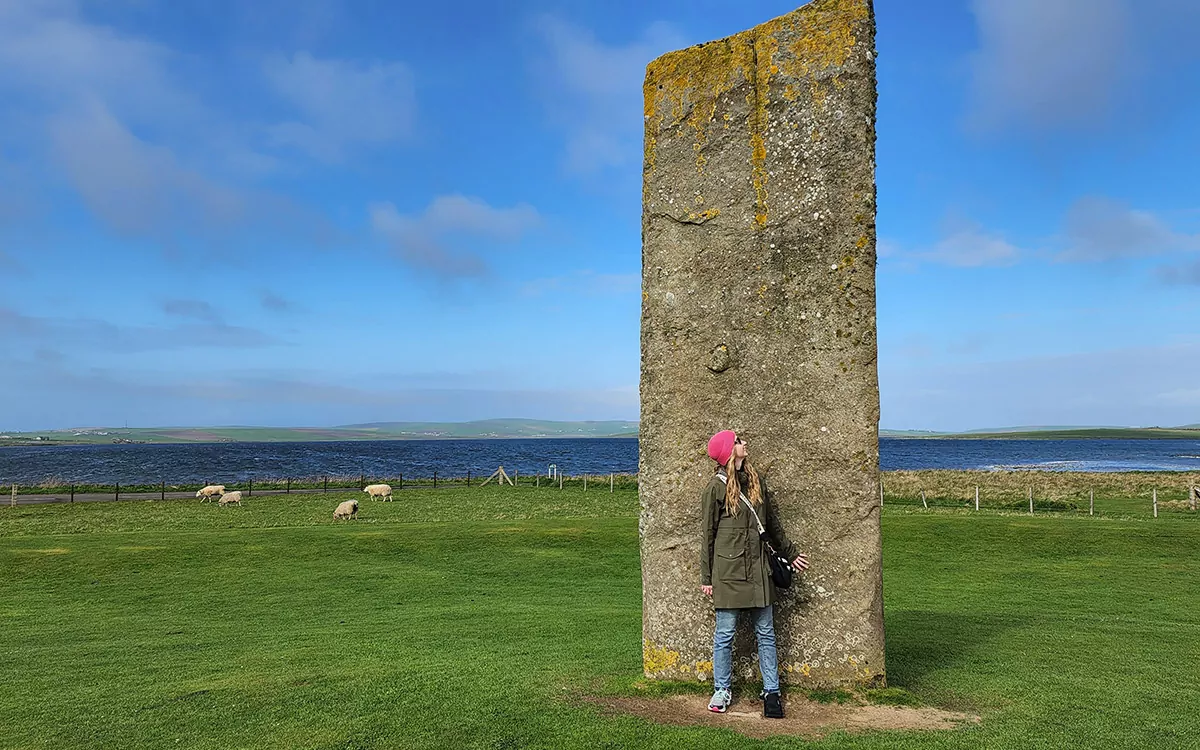
The Standing Stones of Stenness
The Standing Stones of Stenness, is an ancient henge monument consisting of four towering megaliths. The largest of these four stands at six meters high. They’re an absolute marvel to behold, especially considering they were constructed without the aid of modern tools or machinery over 5,000 years ago.
Impressive Neolithic engineering aside, these standing stones are also believed to have been a central gathering place for early communities, perhaps serving as a ceremonial site for rituals and events. The exact nature of these ceremonies remains a mystery. However, the layout of the stones suggests a deep understanding of astronomy and the changing seasons, which only adds to the evidence that these early societies were quite sophisticated for their time.
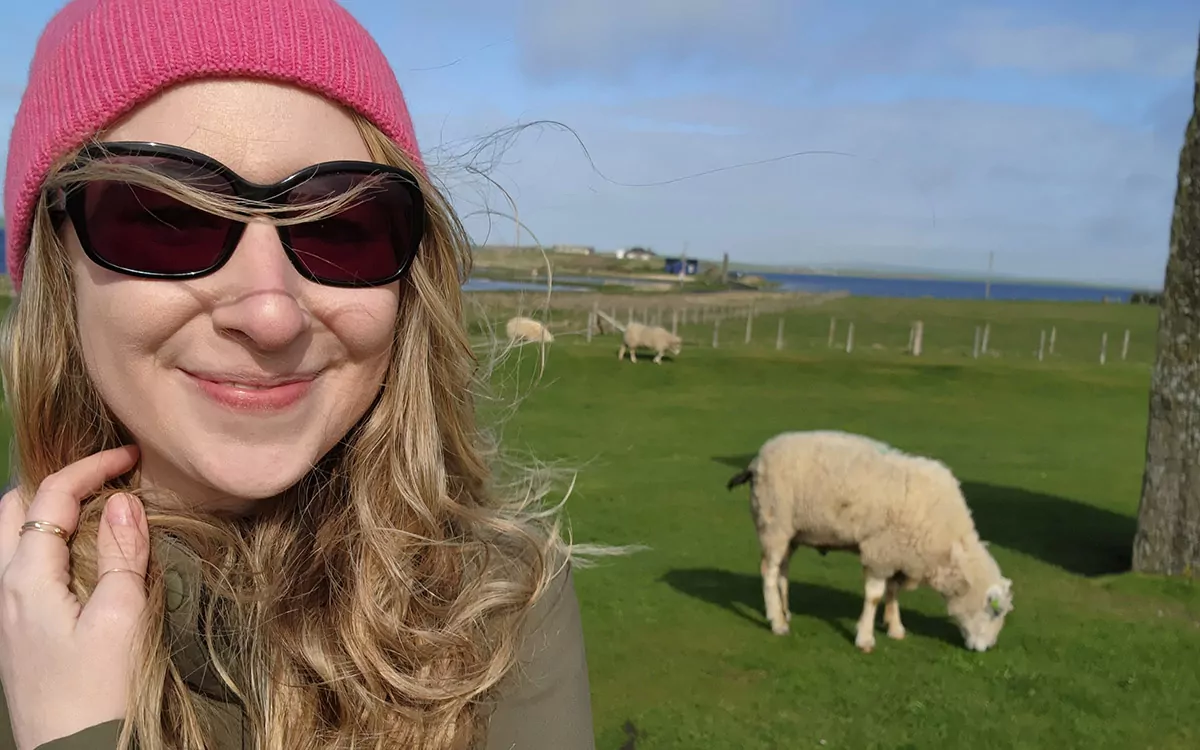
A word of caution if you’re stopping by the Standing Stones of Stenness on your Orkney visit: there are sheep that graze the field in which the stones are located. So, be careful where you step. It is a bit of a minefield… if you catch my drift (I promise that sheep isn’t actively pooping – though that’s 100% what it looks like. It’s just a tail).
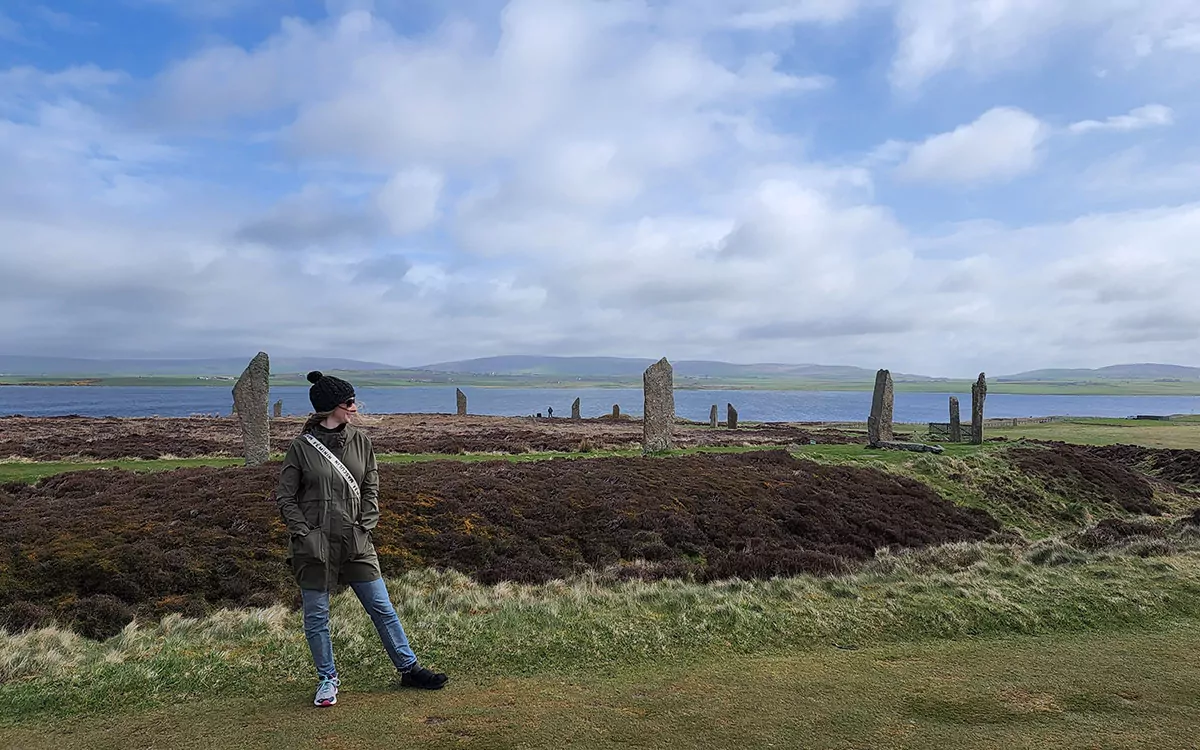
The Ring of Brodgar
Stonehenge pales in comparison to the Ring of Brodgar, at least in my opinion. This is the most majestic stone circle I’ve ever visited. And it has an energy to it that is palpable upon approach (similar in a way to the energy I felt at Stonehenge).
Spanning an impressive 104 meters in diameter, this monumental circle was originally composed of 60 stones meticulously arranged in a perfect circle. Surrounding the circle was a massive circular ditch that was up to three meters deep and 10 meters wide.
What makes this site even more remarkable is the sheer effort that went into its creation. It is estimated that the construction of the circle took around 80,000 hours, and just like the Standing Stones of Stenness, it was completed with relatively rudimentary tools.
What was the Ring of Brodgar used for? It’s believed to have been an important ceremonial site, a place for gatherings, rituals, and perhaps even astronomical observations.
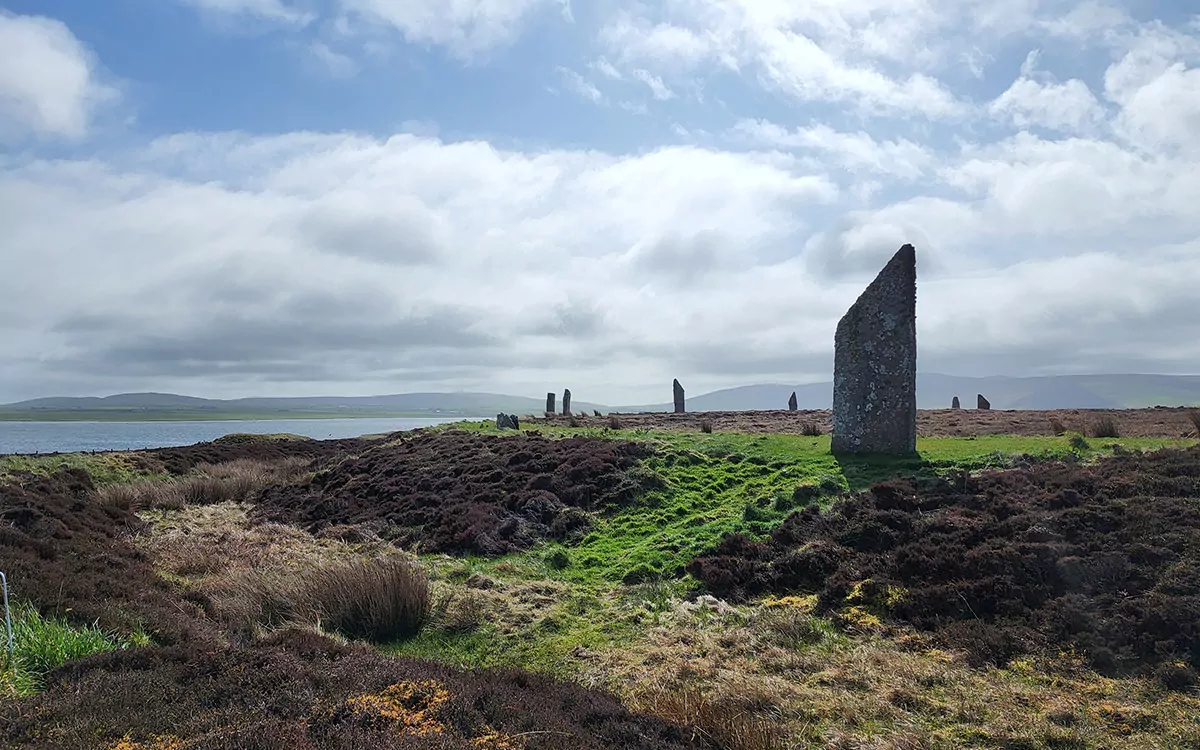
The Legend of the Ring of Brodgar
A beautiful local legend tells the story of how the Ring of Brodgar came to be… According to the story, giants roamed the island, and they loved to dance and make merry. And, on one fateful night, they held an extravagant party at the site where the Ring of Brodgar now stands. As they danced and reveled under the moonlight, they were completely oblivious to the passage of time.
Unfortunately for these giants, they had forgotten one crucial detail: giants, according to the lore, would turn to stone if caught by the first rays of the sunrise. As dawn broke, the dancing giants were indeed transformed into stone, forever frozen in their positions.
The stone circle is said to be the petrified remains of these giants, forever caught in their moment of revelry. In another version of the tale, one fiddle-playing giant kept playing until all the dancing giants turned to stone by the rising sun. In both versions, the stones are believed to come alive and move from their resting place to nearby bodies of water once a year, usually during New Year’s.
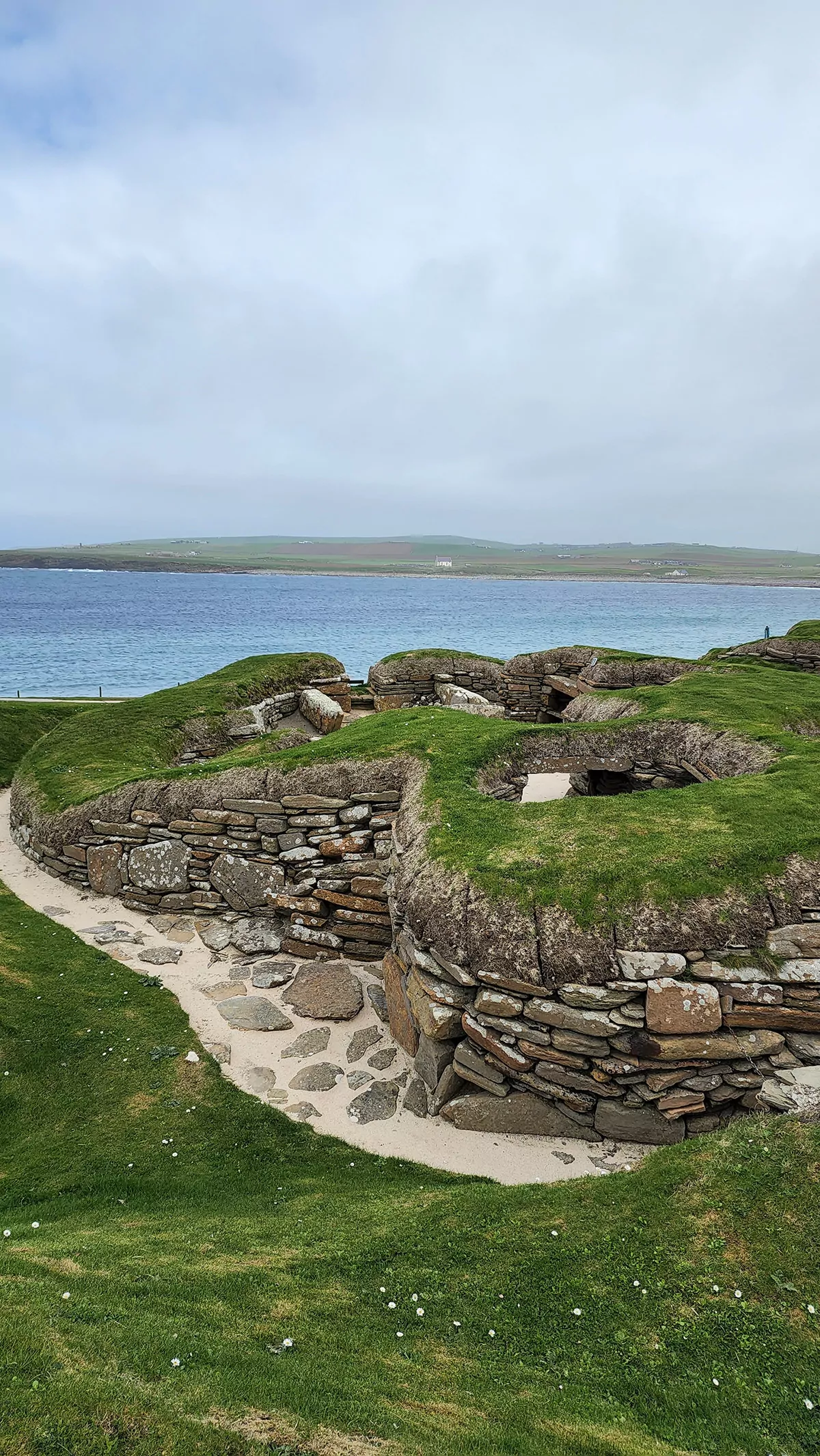
Skara Brae
Lastly, there is Skara Brae, a shockingly well-preserved Neolithic village that is older than even the Pyramids of Giza by approximately 550 to 600 years. The village, which consists of eight stone-built houses, is considered one of the best-preserved prehistoric settlements in Northern Europe.
The settlement is believed to have been occupied around 3180 BC to 2500 BC. And it offers a fascinating insight into the everyday lives of its Neolithic inhabitants. Each dwelling, linked through a series of low, covered passages, contains stone furniture such as beds, dressers, and seats, all meticulously crafted with an understanding of human needs and comforts.
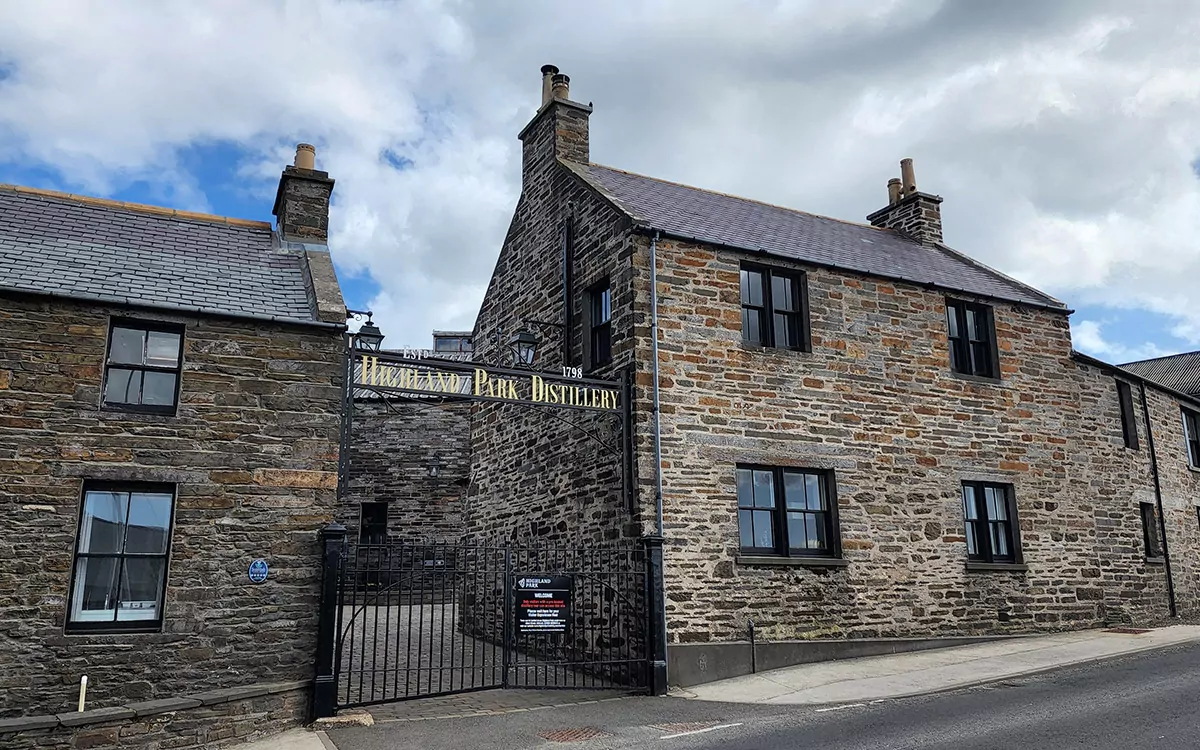
Experiencing Orkney Islands: The Food, Festivals and Activities
Orkney’s charm doesn’t just exist in its incredible historical sites but also in its culture and tasty cuisine. One of my favorite meals I had on the island was at The Real Food Cafe, located inside the Judith Glue Shop in Kirkwall. Everything I ate was locally sourced and absolutely delicious. And, after lunch, I spent a considerable amount in the giftshop picking up locally made knitwear, jewelry, and the cutest crocheted plants I have ever seen (which actually come from Perth, Scotland).
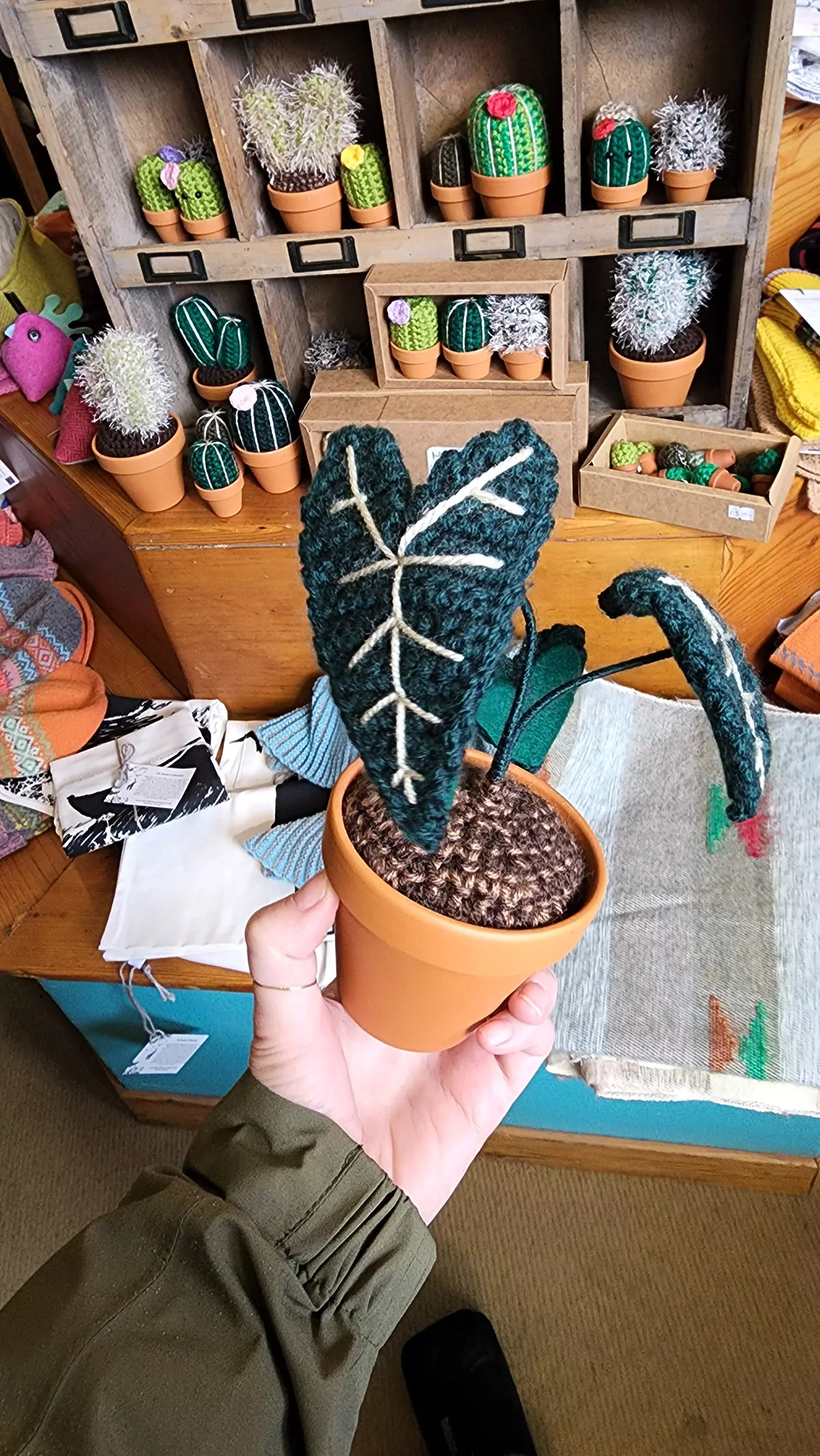
When it comes to cuisine, the local beef, lamb, salmon, and shellfish are must-tries. One of the delicacies is the meat from their seaweed-fed sheep of North Ronaldsay. The Orkney Islands also have two notable breweries for those who want to taste the local spirits, including their local whiskey (Highland Park), gin (the Orkney Gin Company), wine, and rum.
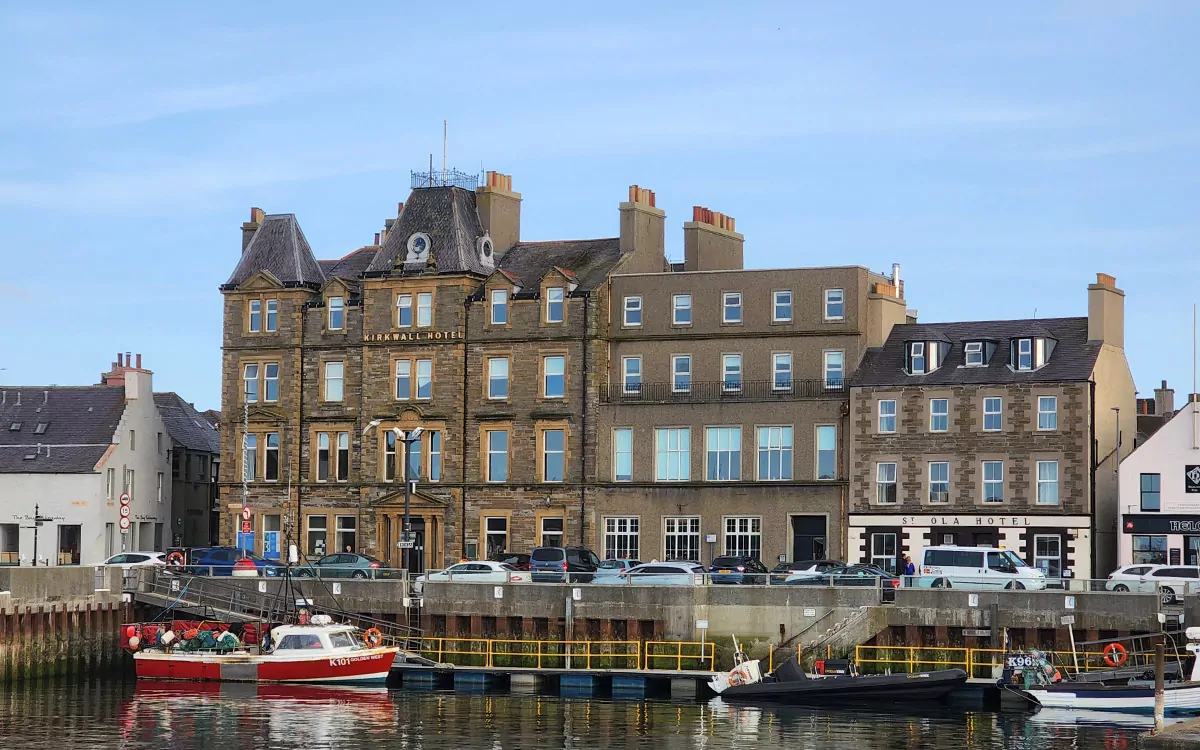
We also fell in love with the Highland Park Bar, located inside our hotel, the Kirkwall. The bar offers an intensive collection of Highland Park whiskies, more than 100 different varieties. And all of these are distilled in Highland Park’s facility in Kirkwall, which is about a 2-mile walk from the hotel.
We visited in early May, and festival season in Orkney was already off to a strong start. One of Orkney’s most famous festivals, the Orkney Folk Festival, takes place in May and is primarily based in Stromness, located on the Mainland’s west coast.
In the fall, there are several additional festivals on the island worth checking out, including the Orkney International Science Festival, the Orkney Blues Festival, and the Orkney Storytelling Festival.
Sports in Orkney
Though small in size, the islands of Orkney boast an impressive range of sports and leisure facilities that cater to enthusiasts of all levels. The Pickaquoy Centre, fondly referred to as ‘Picky,’ is the main hub for sports, arts, and leisure activities in Orkney. It houses two swimming pools, a health suite, a well-equipped gym, squash courts, a climbing wall, and indoor courts. It also doubles as a venue for concerts, gigs, performances, and sporting competitions.
Additionally, other sports facilities are spread across the islands, including a swimming pool in Stromness, a steam room, sauna, spa, and fitness center, and smaller pools on the islands of Hoy, Westray, Sanday, and Stronsay.
For football and rugby enthusiasts, there are three football leagues, a hockey league, and a premier pitch at the Picky Centre. Golfers can choose from 18-hole courses in Kirkwall and Stromness or the excellent 9-hole course in South Ronaldsay.
Other popular activities in Orkney include diving – especially to see the wartime wrecks, snorkeling, or kayaking in the sea.
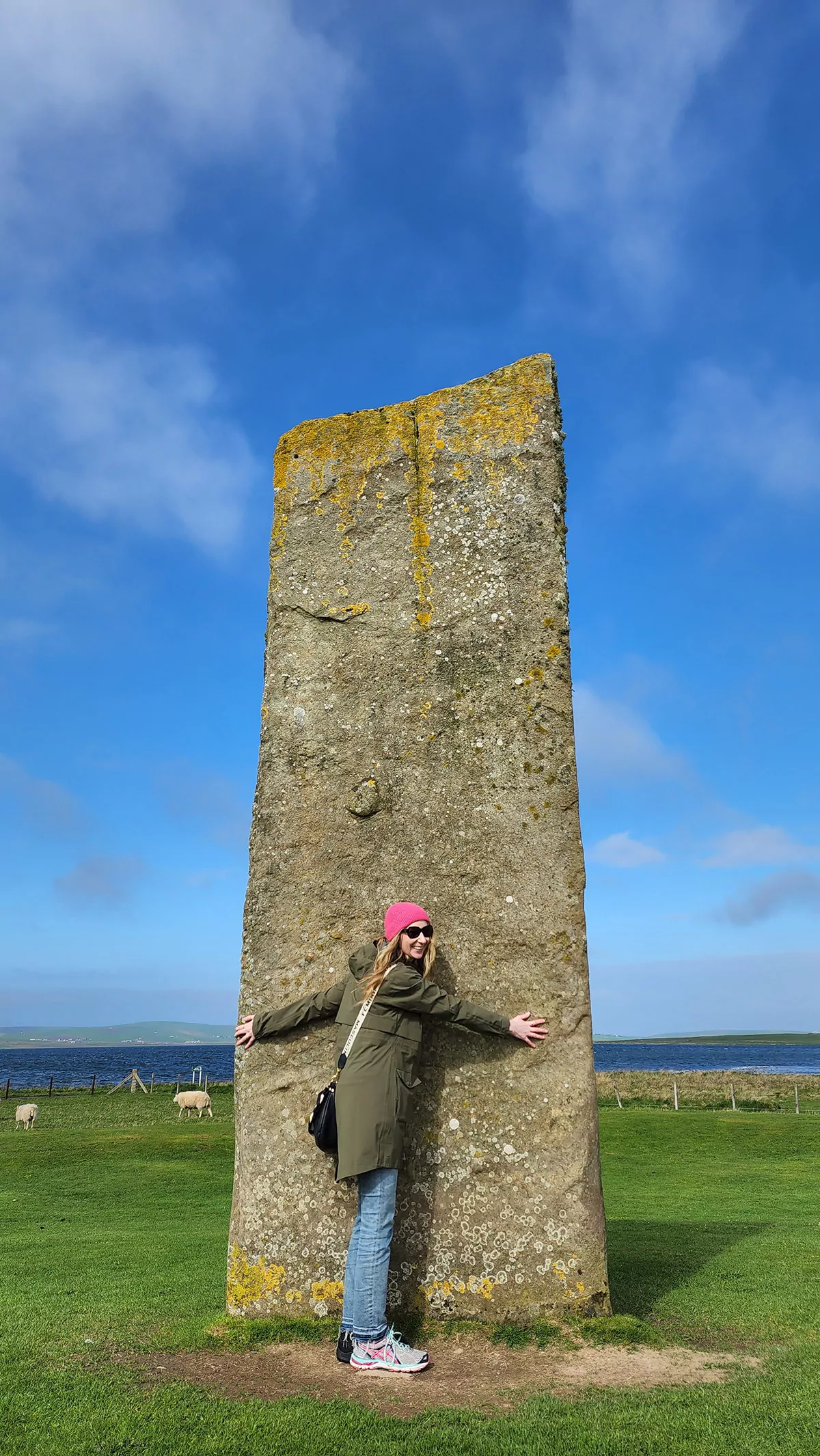
Geek Girl Travel: Why I Fell in Love with Orkney
For me, I was eager to visit Orkney on our Scotland trip for the Standing Stones of Stenness and the Ring of Brodgar. However, the reason I frequently think about wanting to return is because of the wonderful people and the thriving culture of the islands (and that wonderful lunch I had at The Real Food Cafe).
Everyone we encountered was so incredibly kind and proud to live on Orkney. The cities we visited were all clean, and we felt remarkably safe walking around as tourists. And the landscapes were nothing short of stunning. I highly recommend renting a car for at least one day, if not more. And driving around the island to all of the sites. It doesn’t take long to drive around the Mainland. And it’s one of the most beautiful road trips you’ll ever take.
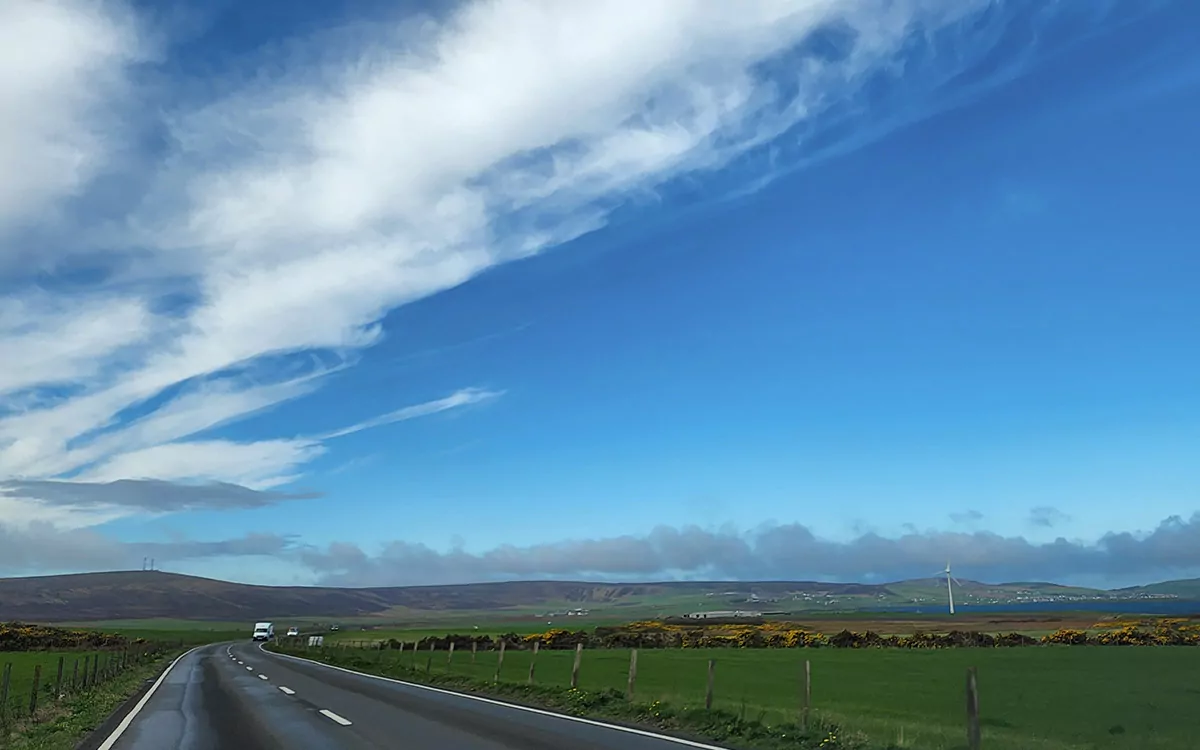
From the perspective of this history geek, the Orkney Islands are an absolute treasure trove. For those who have an interest in ancient history, Mainland Orkney offers some of the most well-preserved runes I’ve seen so far in my travels. And the local legends, brimming with tales of giants, make the sites all that more enchanting.
If you have a passion for history, a love of folklore, an appreciation of tasty food and drink, and want to take a step back in time while still enjoying modern comforts, Orkney is a must-visit destination.


Responses